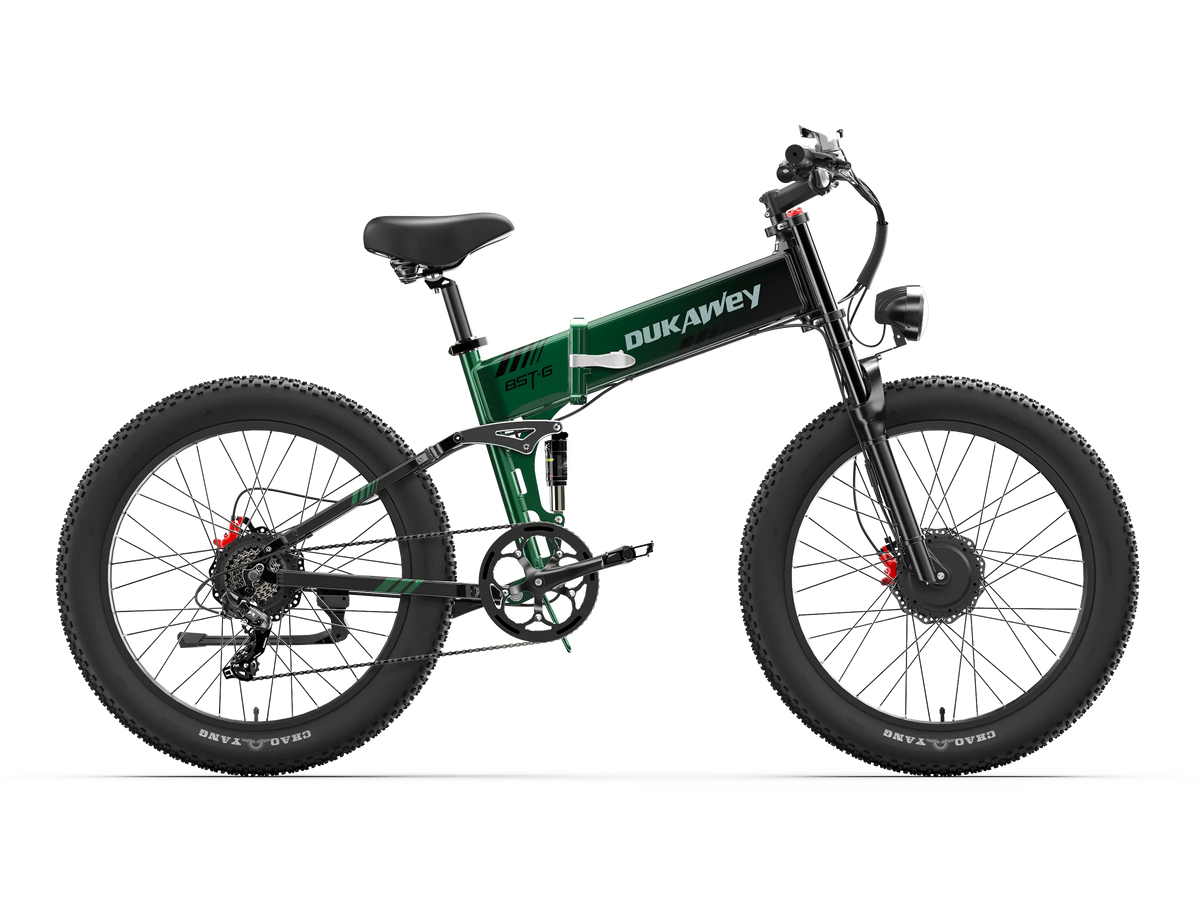Going fast is easy—stopping safely is freedom.
When people talk about e-bikes, the focus is often on speed—how powerful the motor is, how far the battery can take you, how fast you can get to work. But for anyone who has truly spent time on the road, one thing quickly becomes clear: the most important feature on any e-bike is not how fast it goes, but how well it stops.
Whether you're a beginner or a seasoned rider, understanding how braking works—and how to do it properly—is essential for staying safe, protecting your investment, and enjoying every ride with confidence.
How E-Bike Braking Systems Work
Braking on an e-bike isn't quite the same as on a traditional bicycle. E-bikes are typically heavier, with more momentum due to their speed and motorized support. Most systems use either rim brakes or disc brakes, with hydraulic disc brakes now becoming the standard for mid- to high-end models.
The right brake lever controls the rear wheel, while the left controls the front wheel (this can vary by country). The front brake provides most of the stopping power, while the rear brake adds balance and stability. Learning how to coordinate both smoothly is the first step to becoming a safer rider.

Braking with Control and Confidence
The heavier the bike, the more distance it takes to come to a full stop. A typical e-bike can weigh upwards of 25 kg, and when moving at 30 km/h or more, that mass builds up significant momentum. In those moments—approaching an intersection, descending a slope, or reacting to a sudden obstacle—your braking technique matters.
A smart approach is to brake progressively: ease into the rear brake first to reduce speed, then apply the front brake more firmly to bring the bike to a complete stop. This sequence helps prevent front wheel lockups or rear wheel lift, and it gives you more control, especially in emergency situations.
For steep hills or when carrying extra weight, it's also important to shift your center of gravity slightly backward while braking. This increases traction and helps keep your balance.
The Advantage of Hydraulic Disc Brakes
Hydraulic disc brakes are a popular choice for serious riders—and for good reason. Unlike cable-operated brakes, hydraulic systems use fluid pressure to move the pistons that clamp the brake pads onto the rotor. This results in a more precise, responsive, and smooth braking experience, with far less maintenance.
These brakes also perform better in bad weather or on uneven terrain. Whether you're riding in the rain or on loose gravel, hydraulic disc brakes maintain consistent stopping power—and that kind of reliability makes a real difference on the road.

Braking Is a Skill You Can Build
Good braking is not just about having quality hardware—it’s also about practicing proper technique. If you're new to e-bikes, it’s worth taking the time to build muscle memory. Find a quiet place, like a park or an empty street, and practice slowing down, stopping suddenly, and shifting your weight while braking.
In an emergency, you may need to react quickly with your front brake, then follow up with the rear. Moving your weight backward helps prevent flipping forward or skidding. These small actions, when practiced enough, become automatic—and that’s when real safety begins.
Adjusting to Terrain and Conditions
Even with top-of-the-line brakes, road conditions matter. Wet surfaces increase stopping distance, and loose gravel or dirt can reduce traction. When riding in these conditions, anticipate stops earlier, reduce your speed in advance, and avoid sharp braking.
Steep slopes or winding paths also require a combination of braking and careful body positioning. Learning how to "read" the terrain is part of becoming a confident e-bike rider.

Keep Your Brakes in Peak Condition
Hydraulic systems are low-maintenance, but not maintenance-free. Over time, brake pads wear down, fluid may need to be topped up or replaced, and dirt can reduce performance. If you hear squealing or feel sponginess in the levers, it’s time for a check-up.
You can clean brake pads and rotors with isopropyl alcohol, but for more advanced servicing, it’s best to visit a certified bike shop or your brand’s service center. A well-maintained brake system gives you not just better performance—but peace of mind.
FUGL3.0: Confident Braking Built In
At Gleecycle, we design every e-bike around one principle: real safety comes from everyday trust. Our FUGL3.0 model features a hydraulic disc braking system with power cutoff, meaning the moment you brake, the motor stops assisting, helping you achieve a quicker, more stable stop.
It’s one of those features you might not notice right away—but you’ll be grateful for every single time you need to stop fast, especially on a slope or in traffic. That’s what we believe e-bike safety should feel like: responsive, reliable, and always under your control.

Final Thoughts: Braking Is Where Freedom Begins
Riding fast is fun. But being able to stop whenever you need, wherever you are—that’s real freedom. The freedom to move, to explore, to react, to feel in control.
The bottom line of e-biking isn’t speed—it’s safety. And that safety begins with your brakes.
Make sure they’re ready when you need them. Because every ride should begin with trust—and end with confidence.
![Dukawey FUGL3.0 [Pre-order]](http://www.gleecycle.com/cdn/shop/files/FUGL3.0-1.webp?v=1755352438&width=1200)



0 comments